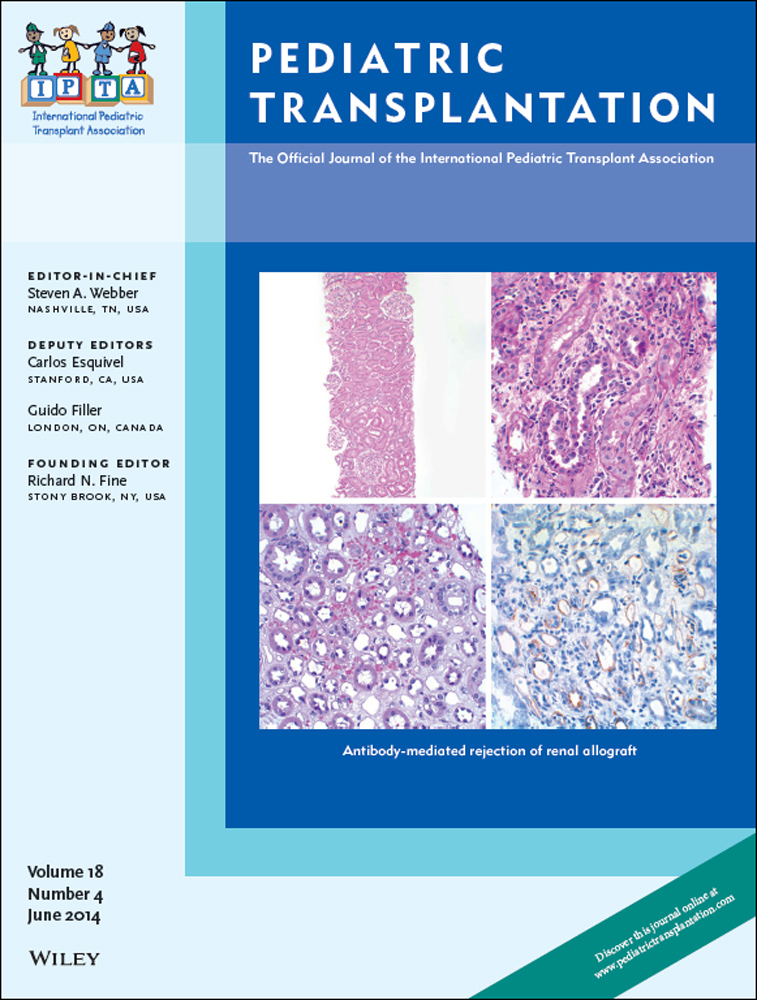Using individual DSA titers to assess for accommodation after late humoral rejection
Abstract
Management of late humoral rejection remains challenging, and DSA may persist. A case report illustrates how individual DSA titers using solid-phase-based assays may help to assess for accommodation. A male cystinosis patient received a cadaveric renal transplant at the age of 12 yr with a daclizumab, tacrolimus, MMF, and steroids-based immunosuppression. After three acute rejection episodes over the first eight months, interstitial fibrosis/tubular atrophy (IF/TA) was diagnosed on biopsy, while the immunosuppression was left unchanged with a high target exposure for both tacrolimus and MPA. One yr later, AMR type III (C4d and DSA positive) was treated with daily plasmapheresis, IVIG 100 mg/kg and pulse steroids 5 mg/kg. DSA (DR 53, DQ4, and DQ 2) were not responding until the plasma volume was increased to 2.5 plasma volumes. A second rise of creatinine confirmed worse humoral rejection; daily plasma exchange was resumed, and two doses of rituximab (375 mg/m2) were given. Subsequently, all DSA dropped, but only DR53 DSA remained unchanged, whereas the DQ antibodies rebounded to very strong titers. With a follow-up of over 120 days after recovery of the CD19 count, off all additional treatment and on identical immunosuppression with tacrolimus and MMF and prednisone, the patient's creatinine remained stable between 45 and 50 um while DQ DSA remain strong to very strong. We conclude that the patient is in a state of accommodation. DSA titers should be monitored when managing late humoral rejection.




